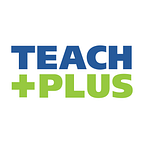To Meet the Needs of Our Students, We Need Clear and Comparable Data
By Al Rabanera
In the past year, I gathered data about my students’ learning and progress through daily check-ins and checks for understanding. In this way, I was able to make informed decisions on how best to support them. Martin, a student of color from a low-income community and a long-term English learner, came to my class with very low academic skills, which his transcripts and test scores reflected. Slowly, as I was able to help Martin feel connected and develop a sense of belonging, he started to feel more comfortable participating in the lesson and began to improve. With data from the daily check-ins and checks for understanding, I was able to help Martin develop foundational mathematical knowledge so he could eventually tackle grade-level concepts. Without collecting such data, I would not have known what Martin and other students needed, and the pre-pandemic learning gaps would likely have widened as the school year continued.
That’s why I believe California should continue to give a state assessment while offering waivers from federal accountability requirements. The data from the California Assessment of Student Performance and Progress will provide information for Fullerton, the district where I teach, to help identify our greatest needs so our students can get the funds for specific interventions and remediation support.
As a participant in the Local Control Accountability Plan Committee and my District Advisory Committee, I have seen over and over how data drives our conversations about the allocation of resources to best meet the needs of our students and address educational inequities. California is expected to receive $15 billion from the American Rescue Plan. As educators, we have a responsibility to make sure the funds are spent to support our students’ learning so the learning gaps created by the pandemic are not exacerbated. This cannot be done without data.
A silver lining of collecting comparable data using a common statewide assessment during the pandemic is it will help to identify schools with greater academic success. This is especially helpful for Title I schools. These schools and their interventions and best practices can serve as models for districts to make the best decisions for students in their communities. In other words, data is the springboard we need to get to informed decision-making and solutions.
The decoupling of our state assessment from federal accountability will effectively turn a high-stakes assessment into a no-stakes test because there will be no penalty based on students’ performance. As an educator, I understand the pressures of accountability and how test scores reflect on my colleagues and me. We spend weeks prior to the assessment planning how to deliver the test prep, and practice test-taking strategies while reviewing previously taught concepts with students. This year, there is no added pressure of providing test preparation days, giving me breathing room to continue to engage in my best practices instead of worrying about my students scoring high on a test.
We need intervention and remediation plans to address the loss of learning students experienced this past year. The best way to make decisions about how to meet the needs of our students is to collect clear and comparable data by using a common state assessment. For students like Martin, this data will provide information about the next steps to move forward in his learning, for the next year and beyond.
Al Rabanera is a high school math teacher at La Vista High School in Fullerton, California. He is a Teach Plus California Policy Fellowship alum.
